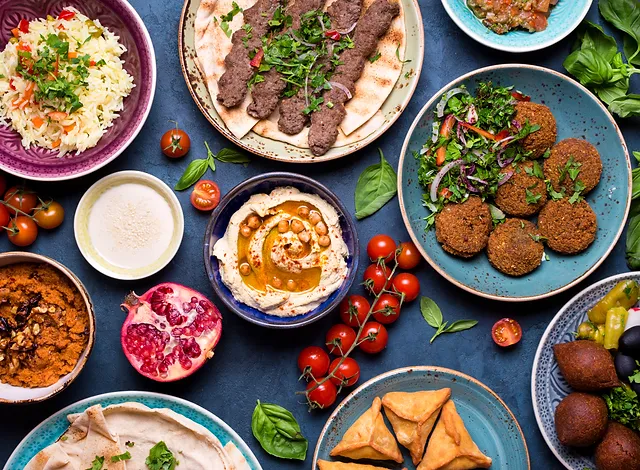Introduction: Syrian Cuisine and its Diverse Influences
Syrian cuisine is a flavorful and diverse culinary tradition that has been influenced by a variety of cultures throughout history. Due to its location in the Middle East, Syrian food has been shaped by the many cultures that have passed through the region, including Persian, Turkish, Greek, and Arabic influences. Syrian cuisine is known for its use of fresh herbs and spices, such as mint, parsley, cumin, and coriander, as well as its emphasis on healthy ingredients such as vegetables, grains, and legumes.
The Impact of Arabic Culture on Syrian Cuisine
Arabic culture has had a significant impact on Syrian cuisine, both historically and in modern times. Arabic cultural traditions have influenced the use of ingredients, cooking techniques, and food presentation in Syrian cuisine. Many popular dishes in Syria, such as tabbouleh, hummus, and baba ghanoush, are of Arabic origin. Arabic cuisine is known for its use of olive oil, lemon, and garlic, which are also staples in Syrian cooking.
Staple Ingredients in Syrian Cooking with Arabic Roots
The use of staple ingredients in Syrian cooking with Arabic roots is a testament to the cultural connections between the two. One example is za’atar, a spice blend made with thyme, sesame seeds, and sumac. This ingredient is used in many Syrian dishes, such as manakish, a flatbread topped with za’atar and olive oil. Another staple ingredient in Syrian cooking with Arabic roots is bulgur, a cracked wheat that is used in many dishes, including kibbeh, a meatball made with bulgur wheat and minced meat.
Traditional Syrian Dishes with Arabic Influences
Traditional Syrian dishes with Arabic influences are a testament to the cultural connections between the two regions. One example is kibbeh, which is a meatball made with bulgur wheat and minced meat. Another popular Syrian dish with Arabic influence is tabbouleh, a salad made with parsley, mint, tomatoes, and bulgur wheat. Hummus is another popular Syrian dish with Arabic influence, which is made with chickpeas, tahini, lemon juice, and garlic.
Modern Fusion: Syrian-Arabic Culinary Innovations
Modern fusion cuisine has brought about a new wave of Syrian-Arabic culinary innovations that are both delicious and creative. One example is shakshuka, which is a dish made with eggs poached in a spicy tomato sauce. Another modern fusion dish is fattoush salad, which is a salad made with toasted pita bread and fresh vegetables, topped with a tangy dressing of garlic, lemon juice, and sumac.
Exploring Cultural Connections through Syrian Arabic Cuisine
Exploring cultural connections through Syrian Arabic cuisine is a great way to learn about the history and traditions of the region. Syrian cuisine is a testament to the diverse cultural influences that have shaped the Middle East over the centuries. By exploring traditional Syrian dishes with Arabic influences, as well as modern fusion cuisine, we can gain a deeper appreciation for the cultural connections between the two regions. Whether you are a food lover or a history buff, Syrian Arabic cuisine is a fascinating and delicious topic to explore.

